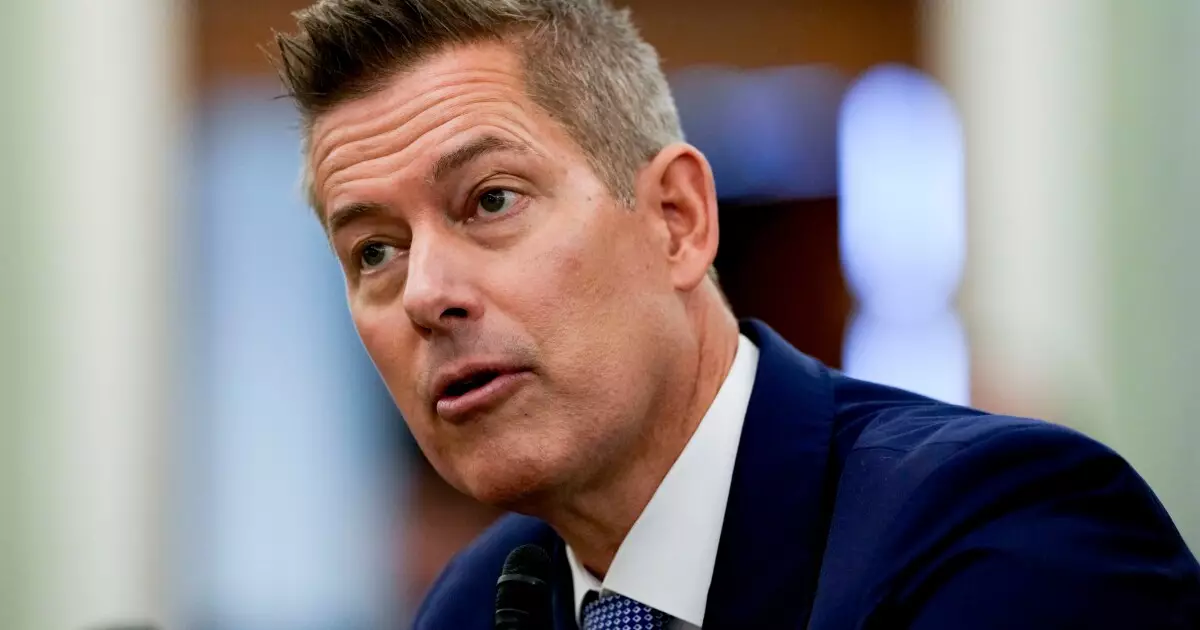As the United States seeks to revitalize its ailing infrastructure, the recent announcement by the U.S. Department of Transportation (DOT) reveals a stunning $3.2 billion investment aimed at cutting through the bureaucratic fat left behind by previous administrations. This moment marks a significant pivot from a cycle of stagnation reinforced by perceived overreaching social mandates. Transportation Secretary Sean P. Duffy’s proclamation, “America is building again,” resonates not just as a gainful economic strategy, but also as a much-needed departure from policies that tied essential projects to red tape. Funding earmarked for infrastructure projects can no longer be suffocated by “diversity, equity, and inclusion” (DEI) stipulations that many argue hold little relevance to the practical challenges at hand.
The previous administration’s fixation on these social justice metrics has not only undercut timely construction but also inflated costs, leaving communities stranded under crumbling bridges and congested highways. This new focus is not merely a rhetorical device; it’s a necessary shift back to pragmatism, which prioritizes essential repairs and upgrades over social optics. In an era where real progress is measured by functional impact rather than ideological alignments, the current federal strategy is a clarion call for restoration grounded in utility rather than performative politics.
Behind the Numbers: A Backlog of Missed Opportunities
The DOT has unveiled plans that are deceptively simple yet revolutionary in execution. A staggering 3,200 projects had previously been announced but never activated under the burdensome constraints of earlier policy frameworks. The claim that “the Trump Administration inherited a record number of unobligated grants” serves as a wakeup call on the inefficiencies bred by excessive focus on leftist social frameworks. The reforms now allow for a more fluid approach to funding sources, utilizing local matching funds through bond sales—a strategy that creates a more direct line between federal resources and community needs.
Cutting away the excess and focusing on core requirements for grants helps relieve pent-up demands and empower local governments. Those businesses, cities, and states that have lain dormant waiting for funding can now begin to engage their citizens in conversations about the tangible benefits of renewed infrastructure investments. After all, roads don’t build themselves, and citizens shouldn’t suffer the consequences of political agendas that prioritize ideology over necessity.
A Policy of Pragmatism
With the DOT’s newfound commitment to eliminate irrelevant checks on funding—such as the prohibitive “social costs of carbon” and the zero-sum reporting on greenhouse gas emissions—we can see the dawn of a new operational philosophy that prioritizes what truly matters. The urgency to reconstruct the nation’s infrastructure is conspicuous, and any platform that treats these discussions through the lens of ideological goals risks losing sight of the necessity that guides effective governance.
By stripping away “leftist requirements” that previously complicated the grant process, taxpayers will likely see significant cost savings. The previous administration’s contracts saw construction costs spike roughly 70%, marking a bleak trajectory for infrastructure growth and innovation. Therefore, by disentangling funding streams from social justice considerations, the current administration is poised to offer a clear path to recovery while still addressing the inevitable challenges of climate change and sustainability—not as obstacles, but as integrated components of a modern infrastructure blueprint.
Moving Forward: Future Prospects
With the DOT collecting and distributing grants across critical sectors—from airports to transportation systems and rail networks—the current funding push is more than just an influx of capital; it represents a return to form for American infrastructure development. A significant part of that focus is now directed at projects that can yield results in the short and medium term, impacting both the economy and everyday citizens’ lives.
Strategic allocations, such as the $1.4 billion directed toward the Bridge Investment Program and funds aimed at modernizing air travel facilities, speak to a conscious effort to dismantle previous barriers to entry. The future strategies of improving public transport systems, rethinking aging airports, and ensuring safety in railways appear less encumbered, allowing for improved collaboration between federal and local bodies. This means not only a renewed infrastructure but also a revitalized sense of community and purpose among citizens witnessing the fruits of their investments in real-time.
If the nation is to build again, it must do so on the foundation of efficiency, transparency, and the unwavering commitment to immediate utility.

